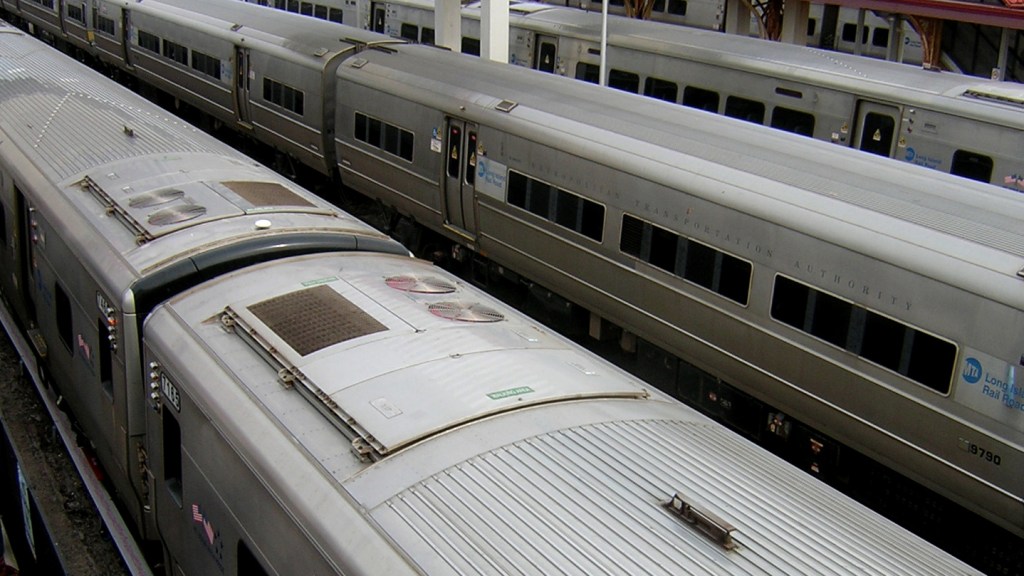Less than 10 miles of new railroad track could make a huge difference to Long Island’s economic future, according to a report released Tuesday by the Long Island Index, a nonprofit group funded by the Rauch Foundation.
Called the Third Track—or the Fast Track, as transportation advocates have promoted it—the additional 9.8-mile segment along the Long Island Rail Road’s main line between Floral Park and Hicksville would remove the bottleneck in the commuter railroad system, which has been impeding the expansion of service for decades and usher in a new era of regional mobility and concurrent growth.
“The Third Track has been an idea that Long Islanders have hoped would happen for at least 40 years,” said Nancy Rauch Douzinas, president of the Rauch Foundation. “That’s a long time for a good idea to sit on a shelf.”
The report, which was released at a special event hosted by the Long Island Association in Melville, predicts that the Third Track would add 14,000 jobs, $3 billion in personal income, $5.6 billion to our Gross Regional Product, 35,000 new residents, $40 million in additional sales tax revenue and $103 million in added property tax revenue—all by 2035, a year chosen by the study’s authors because it would mark 10 years after the supposed completion of the project.
“We believe [the Third Track project] will be a game changer for the Long Island region,” said Kevin Law, president and chief executive officer of the LIA and co-vice chairman of the Long Island Regional Economic Development Council. “The Long Island Rail Road is an asset…and we need to support it because it really is part of the lifeline of our Long Island economy.”
Many obstacles remain in the way before the Third Track becomes a reality, from community opposition along the route to serious problems facing public transportation funding, but the study is the first of its kind to quantify the fiscal benefits that may accrue if the $1.1.-billion capital project is ever constructed. At present, it’s slated to begin in 2020 and be completed by 2024.
Prospects for the Third Track aren’t so daunting, according to Neal Lewis, executive director of the Sustainability Institute at Molloy College, because the LIRR has modified its original idea so it will have a smaller impact on the neighborhoods along the line.
“I think it will be a lot easier to gain community support because the things the community was concerned about in the past have been changed in the new proposal,” Lewis told the Press.
According to the authors of the report, HR&A Advisors, Inc., an economic consulting firm, and Parsons Brinkerhoff, Inc., a global planning and engineering firm, with input from the Regional Plan Association, the benefits of the Third Track range from the mundane to the profound. First, there would be less waiting at the stations because more trains would be available. More riders could afford to leave their cars and board the trains when the schedule is more convenient for them so traffic would be reduced on the Long Island Expressway and the parkways. People from the city could reverse commute more easily, meaning that residents in Brooklyn, for example, could work in Ronkonkoma, making LI more appealing to generations of young people while businesses could draw upon a larger labor pool.
As Long Islanders know all too well, the local economy currently leaves much to be desired. Recently, the Long Island Index reported that only 195,000 square feet of retail space is under construction in Nassau and Suffolk counties, compared to 3,765,000 sq. ft. in northern New Jersey and 1,980,000 sq. ft. in Westchester and southern Connecticut. That’s just one indicator. Meanwhile, members of the millennial generation are moving away instead of waiting for the Island to rebound.
Building the Third Track is seen as one way to get them back onboard. Other plans in the works are the East Side Access tunnel so LIRR riders can go directly to and from Grand Central Terminal, although the project, now slated for completion in 2023, is four years behind schedule and $2.6 billion over budget.
The Double Track on the Ronkonkoma line is now in Phase 1, which means the section between Central Islip and Ronkonkoma is slated to get a second track by September 2016. Phase 2, which would connect Central Islip to Farmingdale, is scheduled to be completed by December 2018. Once done, a disabled train on the track wouldn’t disrupt service on the entire line, and, just as important, reverse-commute trains could be added in peak travel times.
The release of the new report brought together representatives of Long Island business and labor.
“For us, it’s not just about the jobs—it’s about the future of Long Island,” said Roger Clayman, executive director of the Long Island Federation of Labor. “As you see from the study, housing goes hand in hand with transportation…And our ability to provide for all the education [on Long Island] is dependent upon economic growth…We need this project pretty badly.”
Significantly absent from the report’s unveiling was Long Island Rail Road President Helena Williams, whose surprise firing last week by Metropolitan Transportation Authority Chairman Tom Prendergast has shocked a wide swath of the Long Island community, especially as the threat of a debilitating LIRR strike looms on the horizon. Williams was a frequent presence at past events sponsored by the Long Island Index, and has been regarded as a valuable promoter of the LIRR’s role in fostering the Island’s economic growth.
Law told those attending the event that he had called Prendergast last week and “I wasn’t shy expressing my dissatisfaction with the decision… The timing wasn’t great, and her familiarity with Long Island was critical.” Prendergast called Law on Monday and “we had a nice discussion about everything that is important to us here.” He said he plans to meet with the new LIRR president, Patrick Nowakowski, next week.
Asked to comment about the report’s findings, Salvatore Arena, a spokesman for the Metropolitan Transportation Authority, told the Press, “The MTA and LIRR welcome input as they develop the next capital program and examine future infrastructure and equipment needs. We appreciate the contribution to the discussion that was put forward today by the Long Island Index.”




























